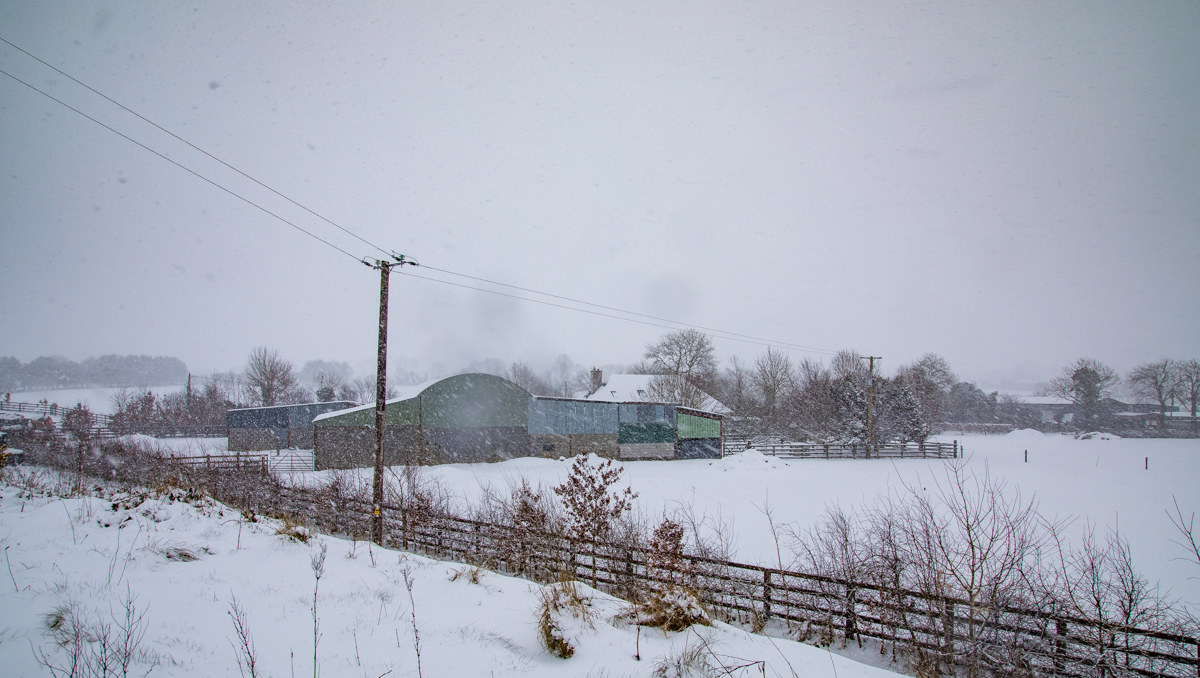In preparation for a short period of cold conditions combined with a high probability of snow over a widespread area, the Department of Housing, Local Government and Heritage’s National Directorate for Fire and Emergency Management (NDFEM) Crisis Management Team held a virtual meeting today (Wednesday, March 8).
It involved Met Éireann, the local authorities, the principal response agencies, key departments and responding national organisations.
The NDFEM CMT said that it continues to liaise with Met Éireann to monitor the evolving weather situation. A further meeting of the group is scheduled for 11:00a.m tomorrow (Thursday, March 9).
Weather outlook
The crisis team said that there remains a level of uncertainty over where snowfall will occur and the likely levels of accumulation.
Met Éireann has issued a Status Yellow snow/ice warning for the whole country valid from 3:00a.m until 11:00p.m Thursday.
Rain, sleet, and snow will spread northwards across the country later tonight (Wednesday) and during Thursday accompanied by strengthening easterly winds.
Accumulations of snow are expected in many areas, particularly over high ground, along with icy conditions. Sleet and snow will likely transition to rain in southern areas for a time.
There is an expectation of widespread icy stretches on Thursday night into Friday morning, with some further accumulations of snow likely.
Met Éireann has issued a further Status Yellow snow/ice warning for Carlow; Cavan; Dublin; Kildare; Kilkenny; Laois; Longford; Louth; Meath; Monaghan; Offaly; Westmeath; Wexford; and Wicklow, valid from 11:00p.m Thursday until 7:00a.m Friday.
Crisis team coordination
- NDFEM Crisis Management Team continues to monitor developments, liaising with Local Authority Severe Weather Assessment Teams and Crisis Management Teams who are actively monitoring the evolution of weather conditions;
- All departments and agencies are relaying the public safety messages, aligned with the latest weather warnings issued.
The public is urged to heed local authority advice and monitor Met Éireann forecasts for updates.
General public safety advice:
- Driving conditions may be hazardous into the weekend;
- All road users should be aware of the potential for hazardous travelling conditions, particularly on untreated roads and allow extra time for all road journeys;
- Motorists should slow down and be aware of the dangers posed by poor visibility during periods of falling sleet/snow;
- Pedestrians should be aware for the potential of slips and falls in icy conditions particularly on untreated roads and footpaths.
The Road Safety Authority (RSA) is advising all road users to check local traffic and weather conditions before setting out on any journeys.
The RSA has the following practical advice for road users in snowy conditions:
- Remove all snow from your vehicle before commencing your journey. Snow left on the roof will become loose and can drop onto the windscreen during braking, thereby causing sudden and severe restriction to your vision. It can also fall off during your drive and cause injury to pedestrians or a reflex action by another driver;
- Clear windows and mirrors before you set out, use a screen scraper and de-icer. Do not use hot water on the windscreen as it can crack the glass;
- In snowy conditions slow down, use all controls delicately and leave extra distance between you and the vehicle in front. Avoid over steering and harsh braking and harsh acceleration. Use the highest gear possible to avoid wheel spin. Select a low gear when travelling downhill especially if through bends;
- In snowy conditions, visibility will be reduced. Do not drive on the tail-lights of the vehicle in front (target fixing). This can give a false sense of security and you will be too close to be able to brake safely. In heavy snow, use your fog lights, turn off your radio and open your window a fraction, so you can hear other traffic, especially at junctions;
- Use dipped headlights at all times, and fog lights in heavy snow to ensure you are seen by other motorists (but don’t forget to turn them off afterwards);
- Watch out for vulnerable road users such as pedestrians, cyclists and motorcyclists and allow extra space;
- Drivers of high-sided vehicles like trucks and buses are particularly at risk from both the dangers posed by snow but also from the high winds associated with heavy snow conditions.
Pedestrians are advised to:
- Wear high visibility clothing or carry a torch as visibility is reduced in snowy conditions. Wear clothing that does not restrict your vision;
- Wear appropriate footwear. Walk on the footpath, not in the street. Walk on the right hand side of the road, facing traffic if there are no footpaths;
- Do not underestimate the danger of snow and ice. Many slips and falls happen in places people regard as safe and secure, typically outside their front door, on the door step, on the path or while getting out of the car. When you approach a footpath or roadway that appears to be covered with snow or ice, always use extreme caution.
